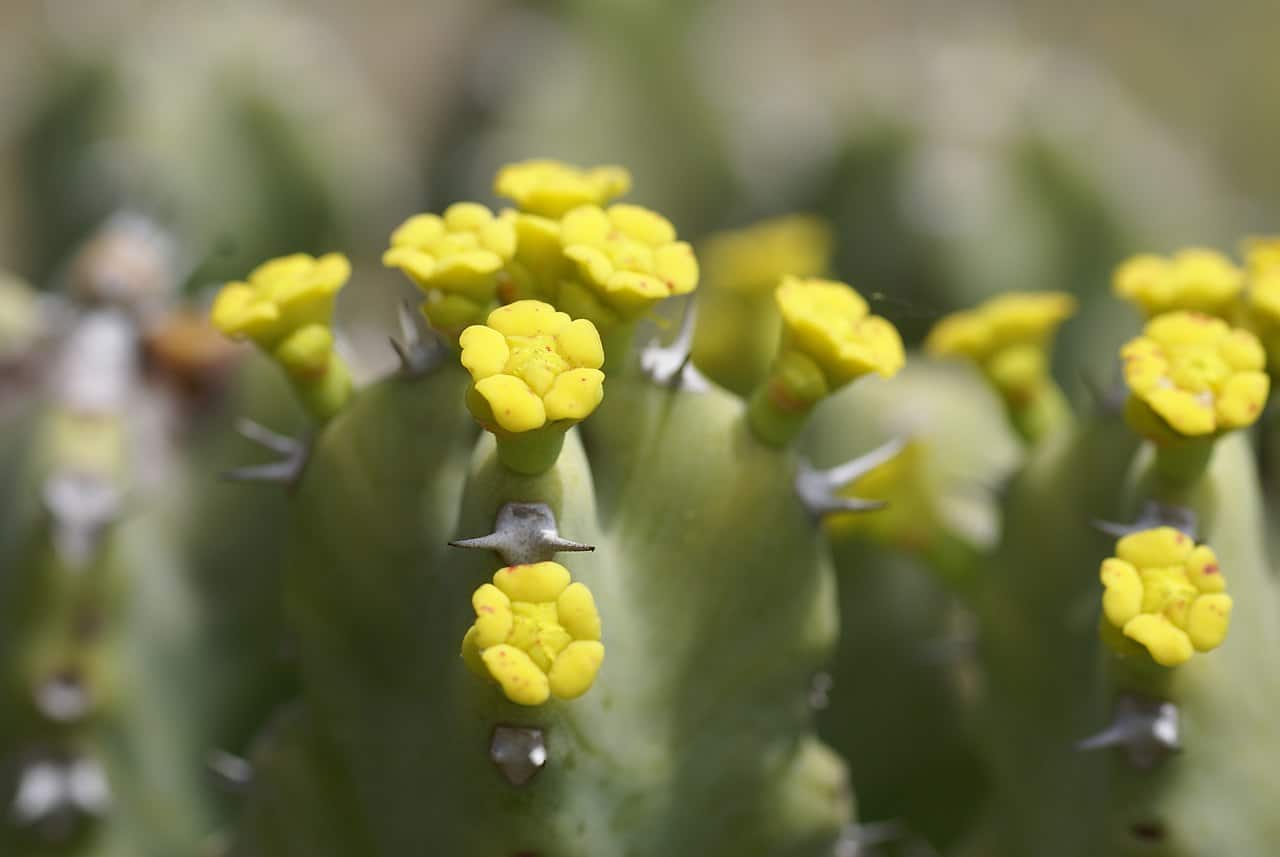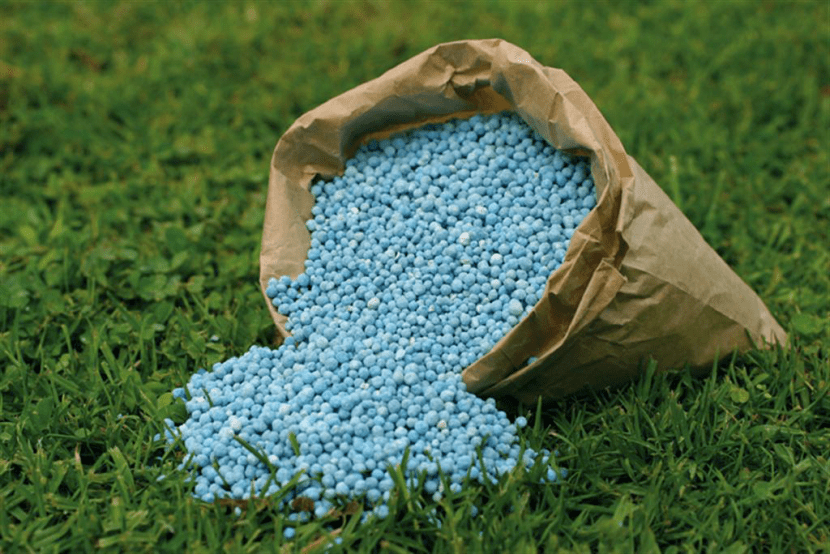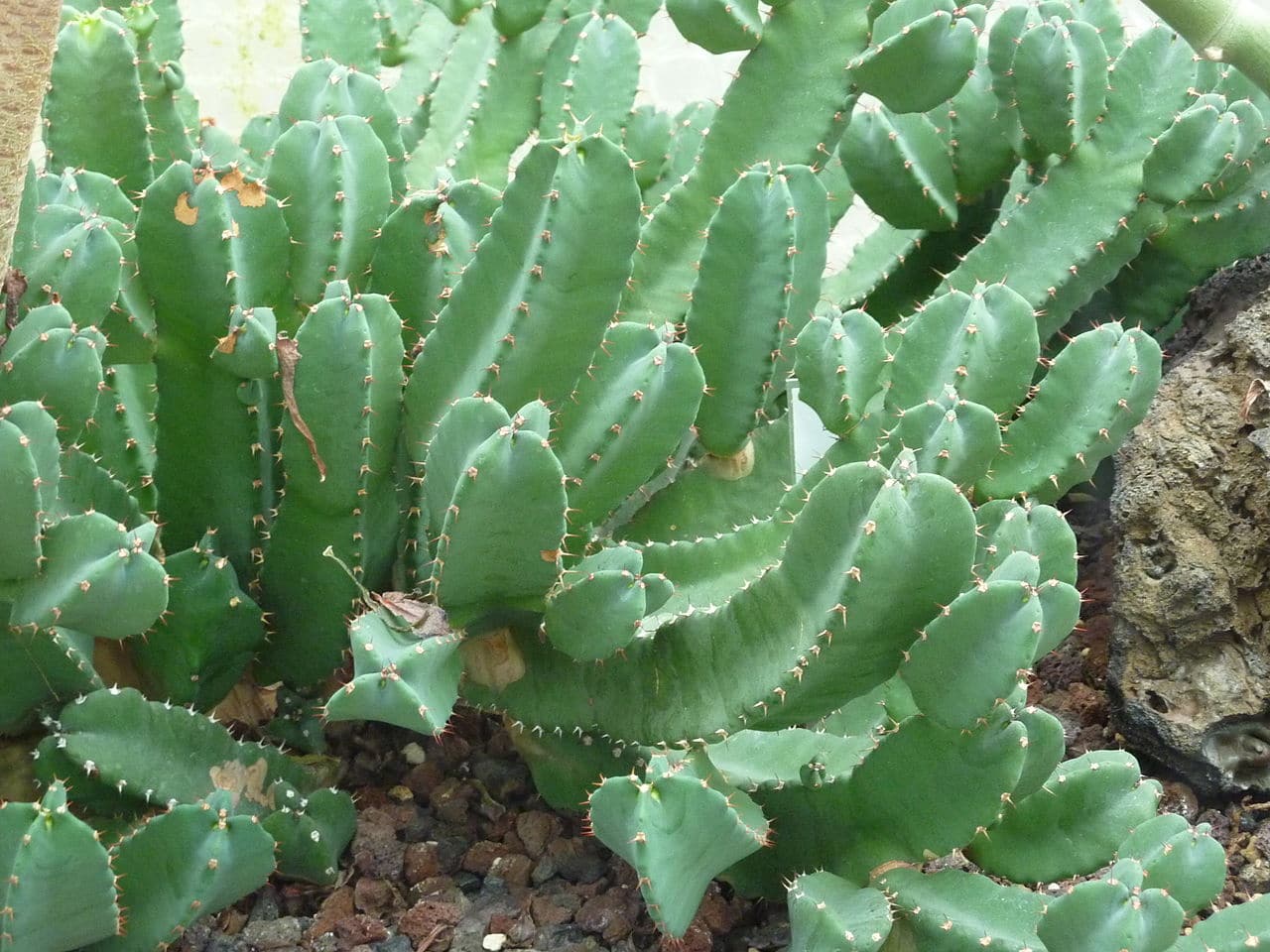
Image - Wikimedia / BS Thurner Hof
La Euphorbia resinifera It is one of those succulent plants that are great in clay pots more or less large, or in gardens that receive little irrigation. It produces multiple stems, which over time form a kind of 'cushion', but cannot be used as such since it has numerous thorns.
Maintenance is easy; in fact, as long as it receives direct sunlight and the ground is able to drain the water well, you are unlikely to have a problem. Anyway, we are going to present it to you in conditions so that you can know how it is cared for.
Origin and characteristics of Euphorbia resinifera

Image - Wikimedia / Amante Darmanin
Our protagonist is a succulent plant native to Morocco, specifically from the southwest of Marrakech and in the Province of Tusa, in the Atlas. It develops numerous quadrangular stems about 40-50 centimeters high by 2-3cm thick, grayish-green in color, and with spines on their sides.. These spines are very short, 5-6mm long, but also sharp. In summer it produces small yellow flowers.
Over time, it forms colonies of stems up to 20 meters in diameter, a characteristic to be taken into account if you want to have as ground covers but are not in a great hurry 🙂. It is also a great plant to have in wide pots.
What are the care you need?
If you want to have a resinous cardon in your collection, as it is popularly called, we recommend taking care of it as follows:
Location
- Interior: does not live well indoors. It needs lots and lots of natural light, something that doesn't usually happen in homes. Now, if you have a very bright interior patio, and with for example a glass roof, then it could go well.
- Body exterior:: direct sun, throughout the day. But be careful: if you just bought it in a nursery where they had it a little protected, get used to it little by little to the light of the star king to avoid burning.
Irrigation

Image - Wikimedia / Ettrig
The frequency of irrigation should be rather low. The Euphorbia resinifera does not resist excess water; on the contrary, it does bear the drought well, as long as it does not last too long. This means that a waterlogged land will hurt you, but spending a month without water will not 🙂.
So, to save you trouble, We recommend watering only when the substrate or soil is well dry. Do not worry if you see that said substrate or soil has begun to crack with the drought; if it happens, take a fork (if it is in a pot) or a spoon or small hoe (if it is in the ground) and fan them.
Earth
- Flower pot: it must have very good drainage. We recommend cheekbones, or if you prefer a universal substrate mixed with equal parts perlite.
- Garden: grows in well-drained soils.
Subscriber
From early spring to summer, especially in this last season of the year, it is advisable to fertilize it with specific fertilizers for cacti and succulents following the indications specified on the packaging.

Planting or transplanting time

Image - Wikimedia / Frank Vincentz
It has to be planted in the garden or in a larger pot in spring, let's know how:
Plant in the garden
If you want to have it in the garden, follow this step by step:
- First, make a planting hole of about 50 x 50cm.
- Then, fill it completely with pumice, or if you prefer with universal growing substrate mixed with perlite in equal parts.
- Then, take the plant - with the pot - and hold it while pressing down and to the sides until the pot is buried. This will make the hole the right size.
- Now, take out the plant and remove the pot from it.
- Lastly, plant it in the hole.
When about 5-6 days have passed, water.
Another way to do it is to fill the hole a bit, remove the container from the Euphorbia and then plant it completely filling the above.
Change the pot
If you see roots growing out of the holes in the pot, or if it has already occupied it all, you have to do the following:
- First, choose a pot with holes that is about 5cm wider than the previous one.
- Then fill it in a little with pumice or a mixture of universal substrate mixed with perlite in equal parts.
- Then, remove the plant from its old pot, and place it in the center of the new one. If you see that it is too high or too low, remove or add dirt.
- Finally, finish filling it, and do not water until 5-6 days have passed.
Multiplication
La Euphorbia resinifera multiplies by stem cuttings in spring-summer. To do this, you have to take a stem, let the wound dry for a week, and then plant it in a pot with a universal culture substrate mixed with equal parts perlite.
Leave it in semi-shade (but with light), and water 1 or 2 times a week. In about 10 days it will start to root.
Rusticity
It resists well cold and weak frosts down to -2ºC, but it is better not to drop below 0 degrees.
What uses does it have?

Image - Wikimedia / James Steakley
La Euphorbia resinifera used as an ornamental plant, but it is known to contain a toxin, resiniferatoxin, which serves as a starting point for developing new pain relievers.
Now, this same toxin, which is found in latex (a substance that all Euphorbia have), is very irritating when it comes into contact with the skin, eyes and mucous membranes; so that when handling it, protective gloves should be worn, and glasses if also the strong wind blows.
What do you think?
To sow or change pots, it is not better to undo the old soil, and remove the shape of the roots to grow in the round while preserving the pot shape?
Hi miguel.
I am not in favor of manipulating your roots a lot unless it is necessary. When planting a succulent, cactus or crass, in the garden or transferring it to a larger pot, it is a good idea to break the soil a little from below (that is, from the base) inwards, for example with a fork, but if you do not have experience or do not trust, it is not something that you consider of vital importance. When the plants encounter more soil, they will produce new roots without problems.
Regards!